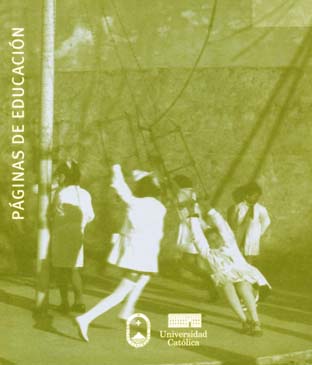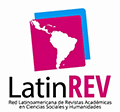Reflexiones sobre los saltamontes y las orugas en la era de las tecnologías de información y comunicación
DOI:
https://doi.org/10.22235/pe.v10i2.1429Palavras-chave:
paradojas, saltamontes, orugas, aprendizaje, escuelaResumo
Este artículo presenta una reflexión multifacética sobre las diferentes estrategias implementadas para obtener conocimiento en el sistema educativo. Con el afán de ilustrar este complejo proceso, se presenta la paradoja de los saltamontes y las orugas. Esta paradoja tiene gran relevancia, pues apunta a un proceso que ha alterado los cimientos de la enseñanza y el aprendizaje en una era donde las tic han alcanzado niveles sofisticados. Las actitudes de los saltamontes —intuitivas, no lineales, proactivas— y de las orugas —estructuradas, predictivas, reactivas— tienen un impacto profundo y permanente en la dinámica de la relación entre maestro y estudiante. Esta reflexión culmina con recomendaciones para estimular el potencial académico de los saltamontes y las orugas en el sistema educativo.
Downloads
Referências
Carr, N. (2010). The shallows: How the internet is changing the way we think, read and remember. Londres, Inglaterra: Atlantic Books.
Chou, P. N. (2012). Effect of Students’ Self-Directed Learning Abilities on Online Learning Outcomes: Two Exploratory Experiments in Electronic Engineering. International Journal of Humanities and Social Science, 2(6), 172-176.
Copeland, B. (2000). The Turing test. Minds and Machines, 10(4), 519-539.
Davis, J. (Ed.). (2001). Stalking crimes and victim protection: Prevention, intervention, threat assessment, and case management. Boca Ratón, FL: CRC Press.
Finger, G., Russell, G., Jamieson-Proctor, R., y Russell, N. (2007). Transforming learning with ICT: making IT happen!. New South Wales, Australia: Pearson Education Australia.
Folb, N. (2013). How thinking against the grain teaches you to love what school hates. En A. Azzopardi (Ed.), Youth: Responding to Lives (pp. 233-244). Rotterdam, Países Bajos: Sense Publishers.
Grego, P. (2014). Blazing a Ghostly Trail. Loncres, Inglaterra: Springer Cham.
Handal, B., y Herrington, T. (2004). On being dependent and independent in computer based learning environments. e-Journal of Instructional Science and Technology, 7(2). Recuperado de http://files.eric.ed.gov/fulltext/EJ850352.pdf
Handal, B. (2015). Mobile makes learning free: building conceptual, professional and school capacity. Charlotte, NC: IAP.
Jackson, J. B. (1994). A sense of place, a sense of time. New Haven, CT: Yale University Press.
Jackson, L. (2002). Freaks, geeks and Asperger syndrome: A user guide to adolescence. Londres, Inglaterra: Jessica Kingsley Publishers.
Kuhn, D. (2005). Education for Thinking. Cambridge, MA: Harvard University Press.
Lajoie, S. P. (2005). Cognitive tools for the mind: The promises of technology-cognitive amplifiers or bionic prosthetics. En R. Sternberg y D. Preiss (Eds.), Intelligence and technology: The impact of tools on the nature and development of human abilities (pp. 87-102). Mahwah, NJ: Lawrence Erlbaum.
Libow Martínez, S., y Stager, G. S. (2013). Invent to learn: Making, tinkering, and engineering in the classroom. Torrance, CA: Constructing Modern Knowledge Press.
Lieberman, M. D. (2000). Intuition: A social cognitive neuroscience approach. Psychological Bulletin, 126(1), 109-137.
McLuhan, M., y Powers, B. R. (1989). The global village: Transformations in world life and media in the 21st century. Nueva York, NY: Oxford University Press..
Papert, S. (1993). The children’s machine: Rethinking school in the age of the computer. Nueva York, NY: BasicBooks.
Piaget, J. (1926). The language and thought of the child. New York, NY: Harcourt.
Popper, K. R. (1961). The logical of scientific discovery. New York, NY: Basic Books.
Siemens, G. (2005). Connectivism: A learning theory for the digital age. International Journal of Instructional Technology and Distance Learning, 2(1), 3-10.
Vygotsky, L. (1978). Mind in society; The development of higher psychological processes (M. Cole, V. John-Steiner, S. Scribner y E. Souberman, Trad.). Cambridge, MA: Harvard University Press.
Wang, H. (2009). Teaching and learning how to write proofs in concepts of Geometry. US-China Education Review, 6(12), 74-80.
Witkin, H. A., Oltman, P.K., Raskin, E., y Karp, S. A. (1971). A Manual for the embedded figures test. Palo Alto, CA: Consulting Psychologists Press.















